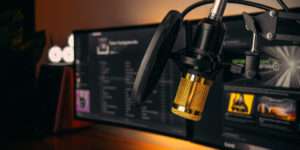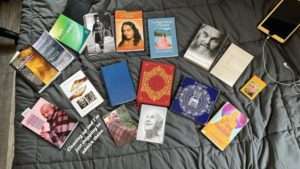How to Take Refuge in Recovery: Objects of Refuge – The Buddha
We work with refuge in our meditations with “objects” to take refuge in. We started the topic on a simple way. Now we get into the weeds on refuge in this ongoing series. We draw from a rare translation on Refuge and Bodhicitta by Patrul Rinpoche. Having received many teachings and transmissions on famous and esoteric texts by this amazing master, I comment in terms of the application of refuge in recovery.
The 12-Step Buddhist Podcast: Episode 83
How to Take Refuge in Recovery, Part 2: Objects of Refuge – The Buddha
From Essential Instructions on Refuge and Bodhicitta and rigpawiki.org
The Buddha is endowed with the Four Kayas and the Five Wisdoms.
The Four Kayas
Kaya (Skt. kāya; Tib. སྐུ་, ku, Wyl. sku) — the Sanskrit word kaya literally means ‘body’ but can also signify dimension, field or basis. This term designates the different manifestations or dimensions of a buddha.
The Tibetan word ku is the honorific term used to refer to an enlightened being’s ‘body’, whereas lü (Wyl. lus) designates an ‘ordinary’ person’s body.
Nirmanakaya
appears in order to tame disciples who are to be tamed.
Nirmanakaya (Skt. nirmāṇakāya; Tib. སྤྲུལ་སྐུ་, tulku, Wyl. sprul sku), or ‘the dimension of ceaseless manifestation’[1], is defined as a rupakaya or ‘form body‘ that arises from the ruling condition of the sambhogakaya and appears as the tamer of various beings, both pure and impure.
Sambhogakaya
self-appearing rūpakāya adorned with major and minor marks.
Vajrasattva adorned with the thirteen ornaments of the perfect sambhogakaya
Sambhogakaya (Skt. saṃbhogakāya; Tib. ལོངས་སྐུ་, longku, Wyl. longs sku) is defined as a ‘form body‘ (rupakaya) of a buddha, which appears only to bodhisattvas and is the basis for the arising of the nirmanakaya. It is adorned with the major signs and minor marks.
Sogyal Rinpoche writes:
Sambhogakaya is the dimension of complete enjoyment, the field of total plenitude, beyond dualistic limitations and beyond space and time.[
Dharmakaya
The unceasing aspect of wisdom, the Dharmakaya Buddha Samantabhadra
Dharmakaya (Skt. dharmakāya; Tib. ཆོས་སྐུ་, chö ku, Wyl. chos sku) — ‘the Absolute or Truth Body’. Upon the attainment of buddhahood, enlightenment manifests at three levels, which are known as the three bodies of the Buddha: the Absolute or Truth Body, or dharmakaya; the Enjoyment Body, or sambhogakaya; and the Emanation Body, or nirmanakaya.
Sogyal Rinpoche writes:
Absolute nature is the dharmakaya, the ‘empty’, unconditioned truth, into which illusion and ignorance, and any kind of concept, have never entered.[1]
Svabhavikakaya
the nature of phenomenal reality devoid of any obscurations
(Skt. svabhāvikakāya; Tib. ངོ་བོ་ཉིད་སྐུ་, ngowo nyi ku, Wyl. ngo bo nyid sku) is one of the four kayas of a buddha.
Khenpo Pema Vajra says:
The svabhavikakaya, is defined as the aspect of enlightened form that is distinguished by two-fold purity, the natural purity of basic space of reality and the purification of all temporary stains.
It is the ultimate buddha kaya. Its wisdom aspect is called the wisdom dharmakaya. And its appearance as a form kaya complete with fivefold certainty in the perception of pure beings is the sambhogakaya. Its appearance as a form kaya to impure beings is the nirmanakaya.
Next week we continue with How to Take Refuge in Recovery, Part 2: Objects of Refuge – The Buddha cont.
How to Take Refuge in Recovery: Refuge in the Buddha
Join me every Friday for practices integrated with words and sounds on this and all the shows!
All are welcome. Send questions to info@compassionaterecovery.us
This is the path of bodhisattvas, yogis and Buddhists in recovery.
“You can judge me, but please take what’s in my hand.“
Want to opine? Leave a message on The 12-Step Buddhist Podcast hotline.
Opine on the hotline (505) 219-1509
Compassionate Recovery: Mindful Healing for Trauma and Addictions
Available in Kindle, Trade Paperback, Hardcover
The 12-Step Buddhist Podcast Theme by Clay Giberson




🔥